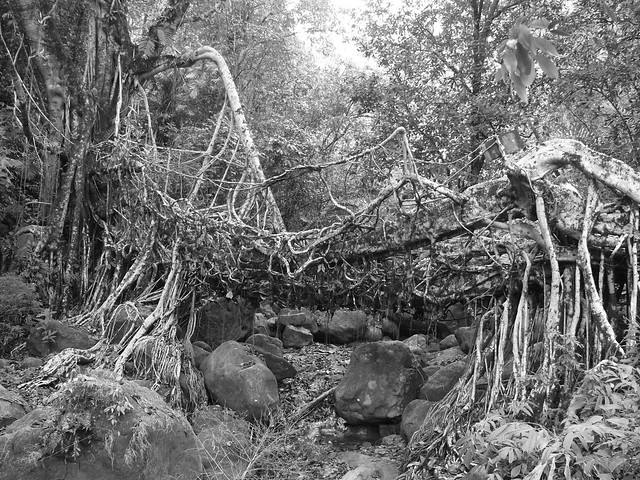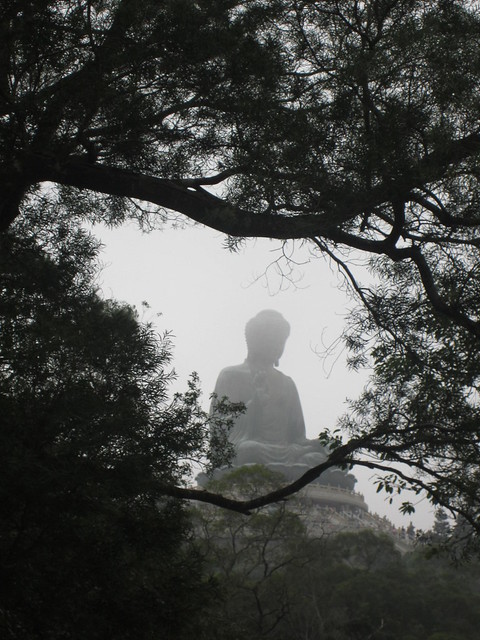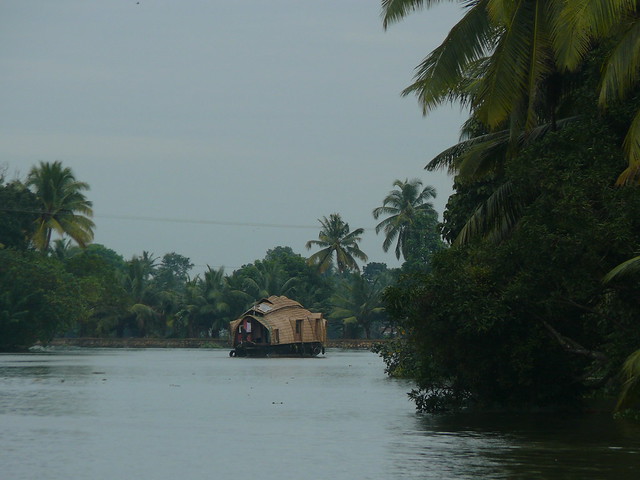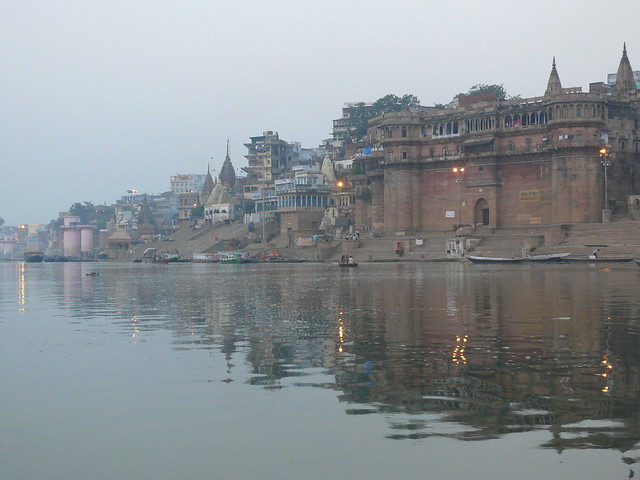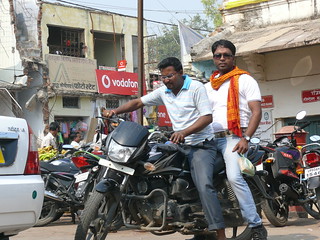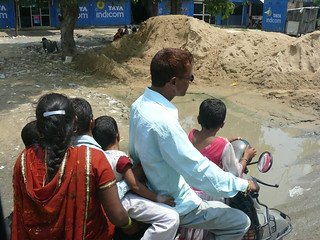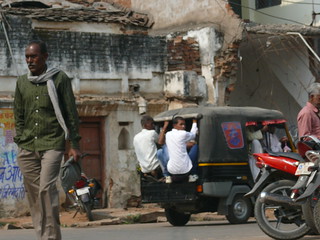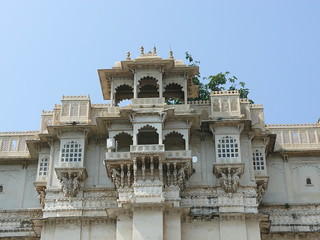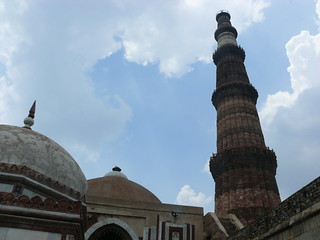While mom was visiting I had a 3-day weekend and so we headed to Bohol. The last time I went I just relaxed on the beach and in a pool. This time I wanted to see all of the main tourist sites. So I arranged for a driver to pick us up at the airport and do a tour of the island of Bohol. Since I didn't really know much about what was on Bohol to see, I just told them I wanted to see the main sights. In my mind that equated to two - the Chocolate Hills and tarsiers. Of course we got much more than that.

Our first stop was at the site of the blood compact, complete with statue commemorating the event. The sandugo occurred in 1565, between Spanish explorer Legazpi and Bohol chieftain Datu Sikatuna. The each cut their arm, let blood flow into a cup of wine, and exchanged glasses to drink. This ritual of friendship was the first treaty between Spain and the Filipinos. Of course when I returned to school a local teacher told me that wasn't the actual spot...but at least I learned a bit more of the history of the island.

From there we stopped at Baclayon Church or the Immaculate Conception of the Virgin Mary. It is a coral stone church dating back to 1727. Strikingly simple on the outside the church surprised with its ornate paintings and decorations inside. We got a chance to look at statues of some of the local saints some of whom mom and I had never heard of. Unfortunately the church was mostly destroyed in 2013 by an earthquake, and so the current structure is the repaired and renovated church.


Do you want to dress up like a butterfly? That is the question we got asked as we left the reptile area and headed towards the butterfly garden (funny how I said I didn't want to see snakes and yet we still had to traipse past their crowded metal cages). In my head I was thinking those fabric wings that you see on kids, then I realised that they had a class wall of dried butterflies and you could stand on one side while the guide took a picture of you as if the wings were on your back. Kind of interesting. I was much more interested in the small butterfly garden. Where we saw a moth bigger than my hand, some fascinating butterflies with almost translucent wings (you could see the colours of the flowers through the wings) as well as many others. I've always had a fascination with butterflies, ever since the monarchs used to stop in our backyard on their migration south. When you're able to go out under the trees, clap your hands, and see thousands of them flutter their wings, how can you not?

After the early morning flight and several stops I was hungry! So off we went to Lobok River cruise which included lunch. It took almost an hour long wait before we got on a boat, this was clearly a popular tourist destination. While it was kind of nice to relax and watch the scenery on the river, I must say the food was hardly worth paying for. However, being in a covered area while the mid-afternoon rains come day made it a good choice for that time of day.


Finally, finally (!) we headed to what I wanted to see. The chocolate hills are one of the two things that Bohol is particularly known for. With over 1,000 hills scattered around 20 square miles there is what feels like an endless view of these. We happened to be visiting during the wet season, but during the dry season they are brown hence the names. The hills are made of karst, or limestone, that has been weathered away to form these hills. Although I must admit I enjoyed the legends we were told about the origin much more. My favourite was the tale of a giant who fell in love with a mortal. Upon the death of the mortal, the giant was heartbroken and cried. The tears dropped as he walked away forming the hills.

Rain prevented us from seeing the tarsiers the day we arrived. While upset, this turned out to be a blessing in disguise. There are two places to see tarsiers on Bohol, and one of them has a better reputation for conservation and care of the animals. We would not have gone to that one as part of our tour. Instead we scheduled an early pick up for the day we flew out and head to the Philippine Tarsier Sanctuary. As you head in signs remind you to be quiet. These animals, the world's smallest primates, are nocturnal and sensitive to sound and light. It makes visiting them somewhat questionable, and so it important to do so in as ethical a manner as possible. Mom and I were assigned a guide for the two of us, keeping the group extremely small (and therefore more quiet). He and the other guides had gone out in the morning to find where 6-7 tarsiers had settled themselves for the day, and he lead us along muddy trails to visit those that were within the region opened to guests. The rest of the nearby forest has restricted access to help the conservation of these endangered species.






















